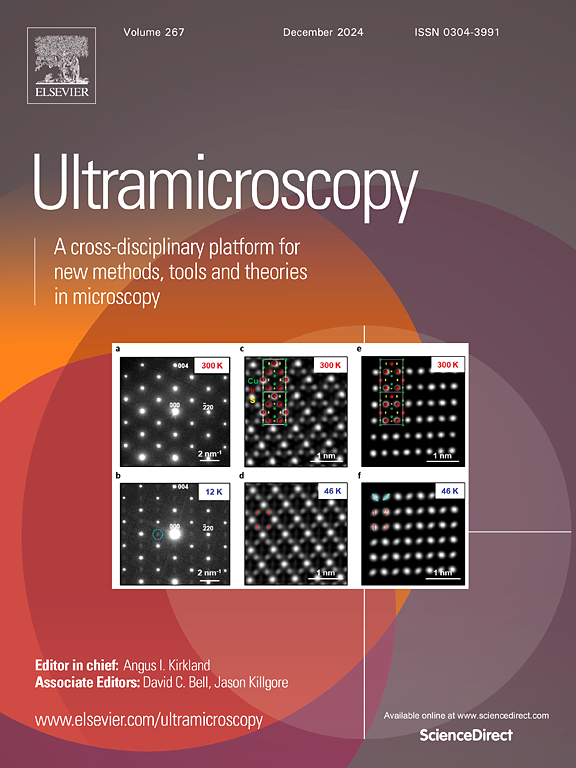空气中实验条件对AFM尖端表面表观接触的影响
IF 2
3区 工程技术
Q2 MICROSCOPY
引用次数: 0
摘要
在力测量中,原子力显微镜(AFM)尖端与表面接触的起始点的精确测定对于计算非接触相互作用的常数以及确定材料的结构和力学性能都是必要的。在空气环境中,接触之前,由于引力的作用,尖端迅速跳到表面。如果一个表面没有被给定刚度的探头变形,则跳跃的末端(悬臂挠度的最小值)被视为接触的开始。在这项工作中,可以看出,在跳跃完成之前,尖端与可变形表面接触。使用极端偏转速度点作为接触的起始点是合理的。基于粘弹性材料与尖端相互作用的动态质量-弹簧模型表明,高挠曲速度和低数据采集率(带宽)是由实验力曲线确定接触时误差较大的原因。在大多数情况下,观察到的接触点低于实际接触点(在某些条件下,也可能出现相反的情况),测量误差至少为50%(取决于实验设置,探头和材料的性质)。本文章由计算机程序翻译,如有差异,请以英文原文为准。
Influence of experimental conditions on apparent AFM tip-surface contact in air
Accurate determination of the onset of the contact between the atomic force microscope (AFM) tip and the surface in force measurements is necessary both for calculating the constants of non-contact interactions and for determining the structural and mechanical properties of the materials. In an air environment the contact is preceded by a rapid jump of the tip to the surface due to attractive forces. If a surface is not deformed by a probe of a given stiffness, the end of the jump (minimum of the deflection of the cantilever) is taken as the onset of the contact. In this work, it is shown that the tip contacts with the deformable surface before the completion of the jump. It is reasonable to use the point of the extreme deflection velocity as the onset of the contact. A dynamic mass-spring model of the interaction of the tip with the viscoelastic material has shown that the high deflection velocity and the low rate of data acquisition (bandwidth) are the reasons for significant errors in determining the contact from the experimental force curve. In the most cases, the observed contact point is lower than the actual one (under certain conditions, the opposite situation is also possible) and the measurement error is at least 50 % (depending on the experimental settings, the properties of the probe and the material).
求助全文
通过发布文献求助,成功后即可免费获取论文全文。
去求助
来源期刊

Ultramicroscopy
工程技术-显微镜技术
CiteScore
4.60
自引率
13.60%
发文量
117
审稿时长
5.3 months
期刊介绍:
Ultramicroscopy is an established journal that provides a forum for the publication of original research papers, invited reviews and rapid communications. The scope of Ultramicroscopy is to describe advances in instrumentation, methods and theory related to all modes of microscopical imaging, diffraction and spectroscopy in the life and physical sciences.
 求助内容:
求助内容: 应助结果提醒方式:
应助结果提醒方式:


